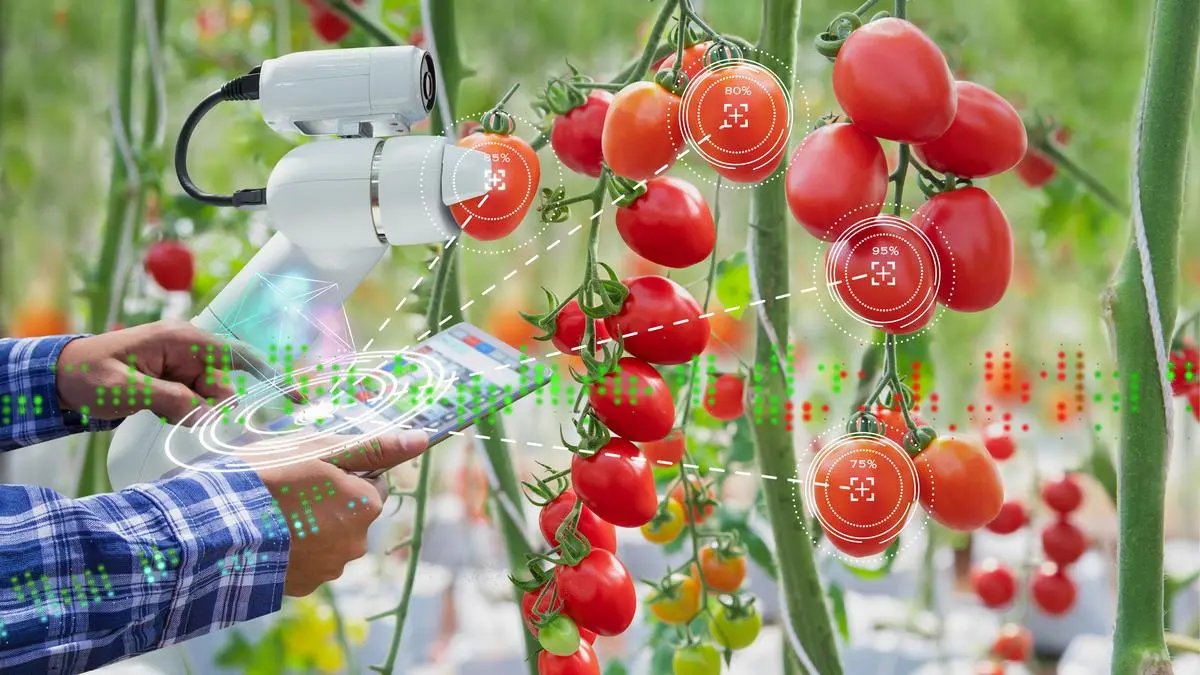WEF launches ‘Future Farming in India’ AI playbook to empower farmers and scale innovation


The World Economic Forum’s Centre for the Fourth Industrial Revolution India, in collaboration with the PSA’s Office and MeitY, has launched the ‘Future Farming in India’ playbook under its ‘AI for India 2030’ initiative.
| Photo Credit:
iStockphoto
World Economic Forum’s Centre for the Fourth Industrial Revolution (C4IR) India, in collaboration with the Office of the Principal Scientific Advisor to the Government of India (PSA to GoI) and the Ministry of Electronics and Information Technology (MeitY), on Wednesday announced the release of ‘Future Farming in India: A Playbook for Scaling Artificial Intelligence in Agriculture’ under its ‘AI for India 2030’ initiative.
A media statement said that the ‘Future Farming in India’ playbook provides an actionable roadmap to bridge the gap between AI’s potential and real-world impact for millions of farmers. It introduces a comprehensive strategy for scaling AI to enhance crop yields, mitigate climate and pest risks, and improve market access.
Central to the playbook is the IMPACT AI framework, a three-pillar model designed to guide collaborative action among governments, industry, startups, and academia, it said.
Creating foundation
The ‘enable’ pillar is spearheaded by governments. This pillar focuses on creating the foundation for AI adoption. This includes developing supportive policies, robust digital public infrastructure (like data exchanges), and responsible AI governance to foster a conducive ecosystem.
The ‘create’ pillar is driven by industry and startups. This pillar focuses on co-developing and validating scalable, context-aware AI solutions through sandboxes and partnerships with research institutions.
The ‘deliver’ pillar ensures solutions reach the last mile. This pillar involves deploying an AI marketplace for easy access to tools and establishing robust feedback loops to continuously refine AI advisory based on ground realities.
The implementation strategy prioritises regional languages and equipping existing, trusted networks of agricultural extension officers, Krishi Vigyan Kendras, and farmer-producer organisations, leveraging AI tools and interpreting data-driven advice and actionable steps — delivered via SMS, voice-based apps, or community workshops — that integrate seamlessly into a farmer’s daily decisions, it said.
An ‘AI Playbook for SMEs’ and a white paper on shaping the ‘AI Sandbox’ ecosystem were also released on Wednesday.
Developed with support from professional services partner BCG X, these publications offer actionable frameworks, sectoral roadmaps, and ecosystem models to harness AI responsibly, inclusively, and at scale in India, it said.
Tool for empowerment
Quoting Ajay Sood, Principal Scientific Advisor, the statement said: “India’s AI journey must be defined by how deeply it transforms lives at the last mile. From empowering farmers with data-driven insights to enabling small enterprises to compete globally, the true promise of AI will be realisQed only when innovation translates into widespread adoption. The AI Playbooks highlight how government, industry, and academia can work together to ensure that every breakthrough delivers real impact — for our economy, our communities, and our citizens.”
Jeremy Jurgens, Managing Director of World Economic Forum, said India’s drive to integrate AI into agriculture and small business is a significant opportunity for economic transformation. These playbooks provide the crucial framework to turn potential into action, uniting government, industry, and innovators.
“Together, we can ensure AI becomes a tool for empowerment, closing divides and creating a future where technology serves humanity at scale,” Jurgens said.
Gaurav Jindal, Managing Director and Partner, BCG, said: “AI delivers impact when it is usable, affordable, and trusted. Together, these reports chart a clear path for India from pilots to scaled adoption — with playbooks that empower farmers to make smarter decisions, enable MSMEs to boost productivity and competitiveness, and a sandbox framework that ensures innovation is safe, validated, and responsible.”
Published on October 22, 2025



